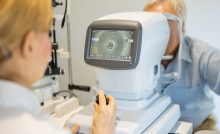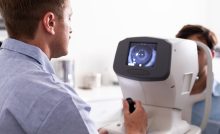What You Need to Know About AMD: Symptoms and Diagnosis


As you age, parts of your body stop performing as well as they used to. While that’s inevitable, you can slow down or minimize its effects by recognizing early warning signs and taking action. Such is the case with the vision problem that comes with age-related macular degeneration (AMD).


Vienna Eyecare Center, the leading eye care clinic in the region, discusses everything you need to know about this common vision illness.
What Is AMD and What Are Its Symptoms?
AMD is a disintegration of the macula or the part of the eye that helps you see clear, fine details. Its definite cause is unknown, but as its name indicates, AMD typically affects people more as they get older. Most patients start showing signs of AMD as soon as they hit their 50s and 60s, and it gets even worse when they enter their 70s and 80s.
Once you notice these warning signs, be sure to visit your trusted optometrist for a checkup and diagnosis:
-
Blurry vision – If you find you can’t make out the writing on a medicine bottle or straight lines appear distorted, then it’s time to have your eyes checked. When left unattended, these symptoms continually get worse.
-
Dark areas in your vision – Shadowy areas in the middle of your focal area are a strong indicator of AMD. In some cases, people experience whited-out areas in their vision.
-
If you’re 50 or older – It’s a good idea to have an eye exam every two to four years, and with increasing frequency, as you age, to help detect problems such as AMD. Your eye doctor can determine signs of AMD before you experience symptoms.
Diagnosis and Treatment
A comprehensive eye exam is the best way to detect if you’re suffering from this problem. A diagnostic tool called the Amsler grid may also be used, as it helps determine a change in visual acuity caused by AMD. Optometrists usually prescribe supplements and therapies to help alleviate the symptoms.
While AMD has no specific cure, you may be able to slow its progress when diagnosed and treated early. Contact Vienna Eyecare Center at (703) 688-7003 today to schedule an appointment. We serve patients in Fairfax, VA, and the surrounding communities.
Recent Posts
What Is the Optometrist’s Role in Glaucoma Co-Management?
Glaucoma is a leading cause of irreversible vision loss worldwide, known insidiously as the "silent…
Who Is the Ideal Candidate for Ortho-K?
For many individuals grappling with the inconvenience of glasses or the discomfort of contact lenses,…
Love Your New Glasses? Here’s How to Make Them Last Longer
Opting for a new pair of glasses not only marks an investment in your vision…
The Link Between Neck Pain and Your Vision
Neck pain is a common ailment that affects many individuals, causing discomfort and restricting daily…
Preparing for Your Eye Exam: Tips for Accurate Results
An eye exam is an essential aspect of maintaining optimal eyesight and overall eye health.…
How Stress and Your Mental Well-Being Can Impact Vision
In the bustling and picturesque city of Vienna, VA, Vienna Eyecare Center stands as a…







